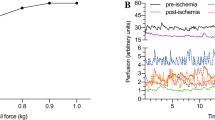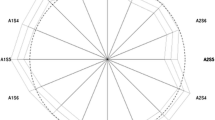Summary
The metabolic changes induced by tourniquet ischaemia in a limb are suggested as important factors in the pathogenesis of tourniquet paralysis After 30 minutes of circulatory arrest, when nerve conduction and excitability have been found to disappear, the incidental disorders m peripheral venous blood were anoxia, hypercapnia, mixed respiratory and metabolic acidosis, hypoglyclaemia, hyperkalaemia, lowered ionized calcium, along with slightly increased total calcium and proteins, and increased lactic acid concenti ations and, by contrast, a decrease m pyruvic acid levels Further research is necessary in order to define accurately the specific factor among these that is responsible for nerve damage and paralysis
Résumé
L’utilisation de garrots artériels pour rendre exsangue la chirurgie des membres est devenue une nécessité que nul ne saurait contester Cette procédure cause parfois cependant des accidents néfastes, sous forme de paralysies ou de parésies plus ou moins durables La physiopathogénie de ces complications demeure obscure et discutée, les uns l’attribuant au traumatisme purement mécanique occasionné par le garrot, les autres tentant plutôt de l’expliquer par l’ischémie aigue prolongée des fibres nerveuses Les auteurs jusqu’ici ont porté peu d’attention aux modifications biocpimiques survenant dans le membre et qui, après deux heures, sont probableilnent incompatibles avec le maintien de l’intégrité structurale de la fibre nerveuse La dette métabolique du membre garotté, à l’instar de celle constatée dans la mort clinique, comporte une phase de réversibilité suivie d’une phase d’rréversibilité relative La transition d’un stage à l’autre semble reposer sur deux facteurs interdépendants et indissociables la durée de l’ischémie et l’importance des altérations biochimiques engendrées C’est précisément l’interrelation entré ces deux facteurs que ce travail préliminaire a voulu concrétiser par des courbes graphiques
Similar content being viewed by others
References
Eckhoff, N L &Lond, M S Tourniquet Paralysis Lancet15 343 (1931)
Denny-Brown, D &Brenner, C Lesion in Peripheral Nerve Resulting from Compression by Spring Clip Arch Neural. & Psychiat52 1 (1944)
Gelfan, S &Tarlov, I M Physiology of Spinal Cord, Nervte Root and Peripheral Nerve Compression J Neurophysiol18 218 (1955)
Bunnell, S Surgery of the Hand, 1st ed Philadelphia and London Lippincott (1944)
Bentley, F H &Schlapp, W Experiment on The Blood Supply of Nerves J Phaysiol102 62 (1943)
McLean, F C Application of Law of Chemical Equilibrium (Law of Mass Action) to Biological Problems Physiol Rev18 495 (1938)
Grundfest, H Effects of Hydrostatic Pressures on the Excitability, the Recovery and the Potential Sequence of Frog Nerve Cold Spring Harb Symp Quant Biol4 179 (1936)
Haldane, J S Some Bearings of the Physiology of Respiration on the Administration of Anaesthetics Proc Roy Soc Med19 33 (1928)
Heymans, S Survival and Revival of Nervous Tissue after Arrest of Cirtlulation Physiol Rev30 375 (1950)
Megovskii, V A Resuscitation and Artificial Hypothermia (English translation) New York Consultants Bureau (1962)
Author information
Authors and Affiliations
Additional information
Presented at the Annual Meeting, the Roval College of Physicians and Surgeons of Canada, January 2,1-23, 1965
Rights and permissions
About this article
Cite this article
Déry, R., Pelletier, J., Jacques, A. et al. Metabolic changes induced in the limb during tourniquet ischaemla. Can J Anesth/J Can Anesth 12, 367–378 (1965). https://doi.org/10.1007/BF03007828
Published:
Issue Date:
DOI: https://doi.org/10.1007/BF03007828




